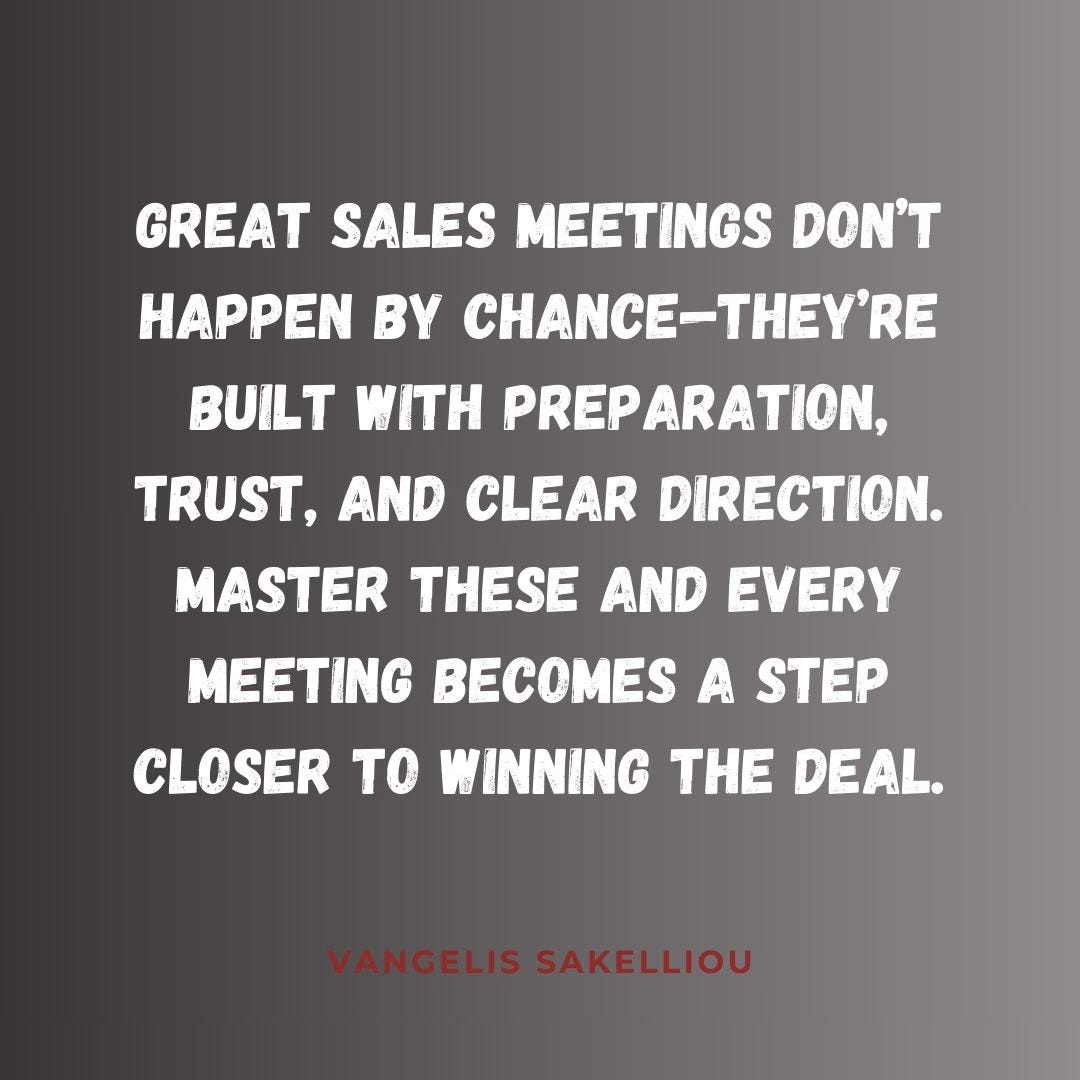Sales emails can be a goldmine for generating leads, if you get them right. But let’s be honest: most emails go straight to the trash. Why? Because they’re too generic, too long, or too focused on the product instead of the buyer.
If you want real engagement, you need to personalize, deliver value, and keep it short. I’ll walk you through the key elements of writing a sales email that actually gets replies.
What you will learn in this blog:
Prepare Like a Pro
Research, set clear goals, and tailor your pitch—preparation builds instant credibility.
Trust Is Your First Win
Clients buy people, not products. Open strong, listen actively, and show empathy.
Meetings Should Create Momentum
Skip the traps (talking too much, feature dumping). Focus on outcomes, handle objections, and always agree on next steps.
If you’re looking to grow your sales and build stronger client relationships, take a look at how I help teams like yours — and feel free to reach out for a chat.
1. Personalization Is Everything
First rule: never send a generic email. If your email starts with “Hi there” instead of the recipient’s name, you’ve already lost them. Personalization goes beyond just using their name. it’s about showing you’ve done your research and you treat each person actually as a person!
Mention a recent company milestone
Refer to a shared connection or industry trend
Highlight a specific challenge they might be facing
When I started referencing a company’s recent achievements or industry trends in my emails, I saw response rates skyrocket. People respect the effort, and that’s what makes them respond.
Example:
“Hey there, I wanted to introduce our product.”
“Hi [Name], I saw your company just launched [X]. Congrats! I work with companies like yours to [solve a specific problem].”
2. Nail the Subject Line
Your subject line is your first impression. And if it’s weak, your email won’t even get opened. Forget vague or self-promotional subject lines like “Our Product Details.” Instead, focus on clear, benefit-drivenlines that spark curiosity or offer immediate value.
Best practices for subject lines:
Keep it under 7-10 words
Use numbers or results-driven language (“Cut Costs by 30%”)
Personalize where possible (“[First Name], quick question about [topic]”)
Example:
“Introducing Our New AI Tool”
“Double Your Sales Pipeline in 30 Days”

I’ve just finished writing something new and insightful—and I think you’ll find it valuable. I wanted to offer it to you first.
FREE Starter Kit – Powering up your lead generation: Click HERE
3. Focus on Value, Not Features
One of the biggest mistakes in sales emails? Talking about your product instead of your prospect’s problems.People don’t care about your features. They care about how you can make their life easier, increase revenue, or save them time.
Identify their pain points
Frame your product as the solution
Keep it about them, not you
Example:
“Our software has AI-powered automation and integrations.”
“Struggling with lead follow-ups? Our AI-powered tool books meetings for you—so you never miss a deal.”
I’ve mapped out the ultimate tech stack for sales and marketing success—download the full guide and see what your company might be missing.
4. Keep It Short and Actionable
Nobody has time to read long-winded sales emails. Cut the fluff, get to the point, and always end with a clear call to action (CTA).
Aim for 3-5 short sentences
Make your CTA clear and easy (“Let’s schedule a quick 10-min call”)
Use bullet points to make your email scannable
Example:
“I’d love to set up a call to discuss our solutions. Let me know your availability, and I can send over some materials as well…”
“Would you be open to a quick call this Thursday or Friday? Let me know what works!”
5. Follow Up (Most Sales Happen Here)
Most prospects won’t reply to your first email. That doesn’t mean they’re not interested. It just means they’re busy.
Best practices for follow-ups:
Wait 3-5 days before following up
Provide additional value each time (insights, case studies, a helpful article)
Keep it friendly and persistent, but not pushy
Example:
“Hi [Name], just following up in case this got buried in your inbox. I’d love to hear your thoughts; let me know if a quick call makes sense.”
Final Thoughts
The perfect sales email is short, personalized, and focused on the recipient’s needs. Get straight to the point, offer clear value, and don’t be afraid to follow up.
Want better email response rates? Try these strategies in your next email and see the difference.
I’m always happy to share free, practical insights to help you grow your business development footprint. Don’t miss out; grab them from the links below.
FREE White Paper – Grow your sales internationally: Click HERE
FREE How To Guide – Navigating through sales opportunities: Click HERE
If you’d like to receive more insights like this and be part of a small group I email from time to time, just sign up using this link.

